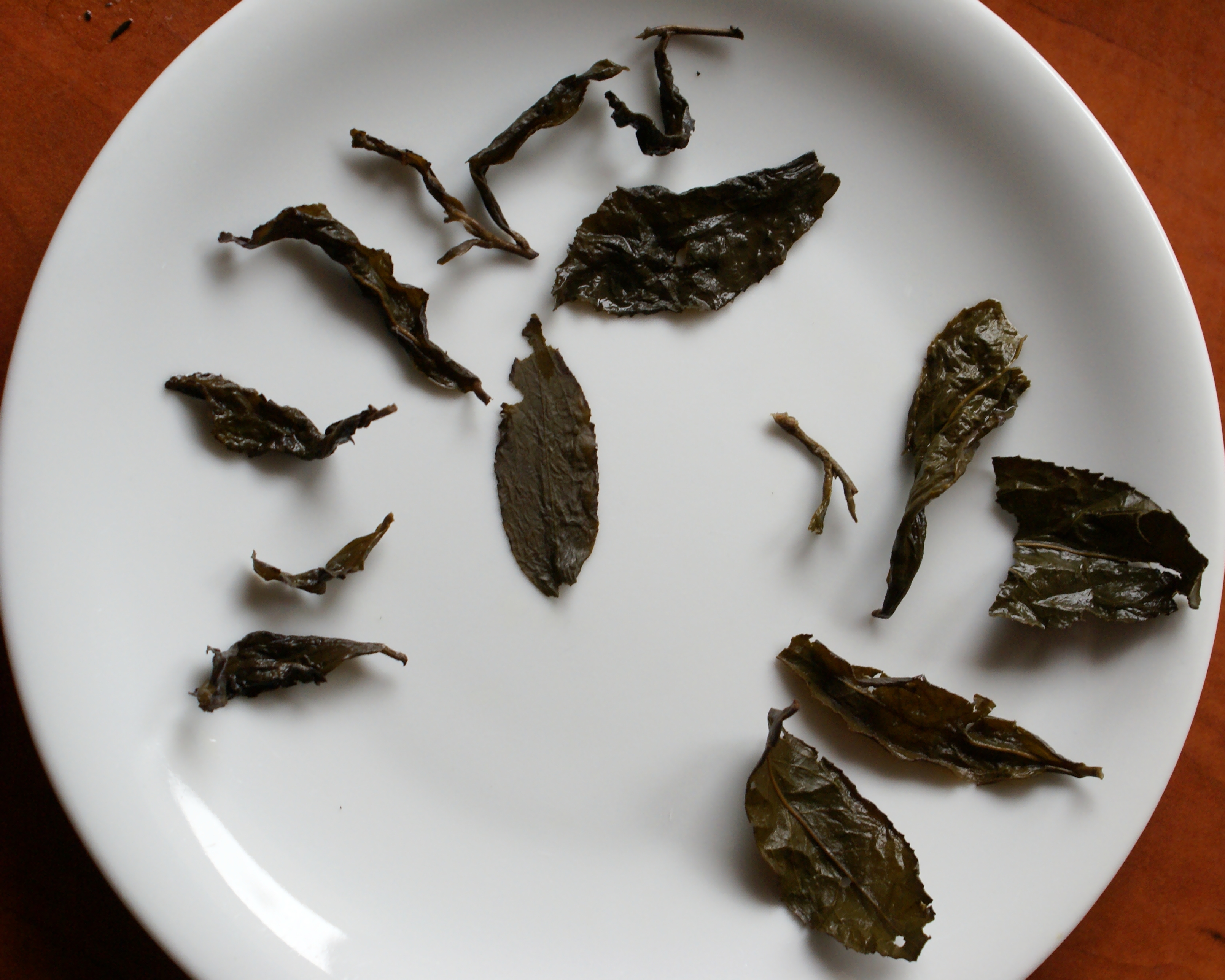Lao Ming revisited
Posted on 25 July 2011
I reviewed a Taiwanese Dongding oolong of Lao Ming here. The elusive teamaster is steadily gaining popularity here in Poland; a member of my tea activity group ordered a number of 2010 and 2011 teas directly from Taiwan, and so I had an opportunity to look at Lao Ming’s œuvre again.
It’s interesting how my perception of these teas is changing with time. My first reaction was enlightenment: here was a truly deep, balanced, perfectly gauged rolled oolong in a style I really like: noticeable roast but skillfully blended into the tea’s personality. This time as I went through three batches of 2010s, the level of roast actually became an issue and my admiration for Lao Ming became more relative.
It’s especially true of one tea: the ZH-1121 (I remain nonplussed by Lao Ming’s cryptic approach to naming teas). It is definitely a high-roasted example and I feel it’s slightly excessive. In a long 5-minute competition brewing (it’s how I brew all these news teas for the first time) the infusion turns a deep brown colour and the flavour is very tannic, drying and bitter. The leaf character is completely overpowered by the chocolatey, café au lait-like roast. The texture is smooth and milky, and there is no freshness; other than being bitter it’s also rather dull.
A 5-minute brew is never perfect for an oolong: I use it as an analytic standard but of course it’s preferable to orchestrate a real gongfucha session in dedicated oolong teapot. It makes any tea, and tea drinking in itself, just more meaningful. Brewing in a competition cup is forcing a tea into an external standard; putting leaves into prized Chinese clay, slightly adjusting the parameters to get the best out of the tea, has a kind of humbleness to it that I really like.
This Lao Ming ZH-1121 came out significantly better in gongfu. I used very short infusion times, starting with 5, 5, 7 seconds: this helped eliminate the bitterness and tannic excess. But however better, the tea still tasted unbalanced: round and smooth and dominated by the milk-chocolatey roast. It’s the equivalent of an overoaked wine. Essentially, the competition brewing aggravated some (to me) defects that were still present in the more fine-tuned gongfucha, albeit less magnified.
The N-1103 (or just n-cha; Lao Ming advises a lower brewing temperature here: 85C) came out pretty similar to the ZH-1121, although less exasperated. It’s still a rather high roast (contrary to the producer’s own classification, which is “middle baked”) but the chocolatey, milky notes do not totally obliterate the leaf character. There is a hint of attractive black olive and olive oil flavour that I admire in the Hungshui oolongs I buy from Tea Masters. Here too, the gongfucha approach is preferable, and lower temperature or very brief infusion times are a good idea as well. This n-cha doesn’t really develop a lot of complexity but six or seven solidly good, consistent infusions can be obtained.

ZH-1121 (left) and ZL-1103 (right): the latter’s leaves open completely, indicating a lighter roast.
One tea I liked in this flight was ZL-1103. It is considerably lighter in roast and consequently in colour and body (see photo of infused teas above). But my preference is not just stylistic: less roasted, this tea just has better natural balance with more juiciness and freshness and a more transparent, natural flavour.
I have three more Lao Ming teas (all from 2011) that I’ll review in the next few days.
Disclosure
Source of tea: gift from a tea friend.


